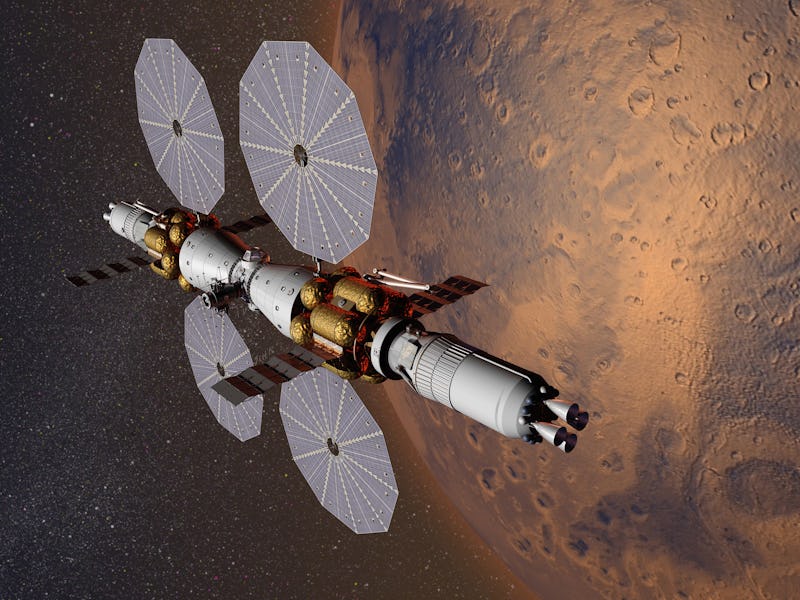Artificial Photosynthesis May Help Scientists Create Atmospheres in Space

Elon Musk, Jeff Bezos, Lockheed Martin, and NanoRacks all love talking about how they want to colonize space. But there are obviously a few of logistical issues, including how to produce enough energy and breathable air for astronauts to be in outer space for prolonged periods of time.
Cracking the code may involve taking a cue from our fellow earthlings, plants, who are able to convert sunlight into chemical energy through the process of photosynthesis. That’s according to an international group of scientists who say that their recent leap in the field of so-called artificial photosynthesis may help establish human outposts in deep space.
Join our private Dope Space Pics group on Facebook for more strange wonder.
In the paper published in Nature Communications Thursday, the researchers detailed how to conduct photoelectrochemical experiments — the chemical reactions needed to turn light into chemical energy and produce oxygen — in a microgravity environment. This takes them one step closer to being able to use sunlight both to extract breathable oxygen from water but also to harvest hydrogen gas as a renewable source of fuel.
There is still a lot of work to be done until scientists can reproduce this process as well as plants, but first-author Katharina Brinkert, said the team believes artificial photosynthesis could one day create artificial atmospheres in outer space.
A 1969 NASA space concept, to be assembled on-orbit from spent Apollo program stages.
“On long-term space missions, it’s about creating an artificial atmosphere on the spaceship, so essentially something nature provides for us,” she tells Astronomy Magazine “We are so lucky to actually have trees and algae and so on performing natural photosynthesis. So we would like to do […] artificial photosynthesis.”
The team conducted their experiments inside the Bremen Drop Tower in Germany — a 476-foot spire built to drop things off of. Throwing things down this tower creates exactly 9.3 seconds of weightlessness. This gave the researchers a moment to see if their photoelectrochemical cell could produce hydrogen gas from a water solution in zero-gravity.
The experiment succeeded, which means it could potentially be implemented to improve existing devices aboard the International Space Station. The ISS already has its own system that splits water into hydrogen and oxygen, but it’s far from becoming the spacecraft’s only source of fuel. The station relies on regular resupply shipments from Earth to keep it operational.
By dropping their TK cell from the top of the Bremen Drop Tower, the researchers were able to see if it would function in a microgravity environment.
Frequent shipments to the ISS are possible because it’s only orbiting a couple of hundred miles above our head. The further out in space we go, the more costly these missions become.
The type of research conducted by Brinkert’s team could one day lead to self-sustaining human outposts orbiting the Moon, Mars, and even our most distant planetary neighbors.